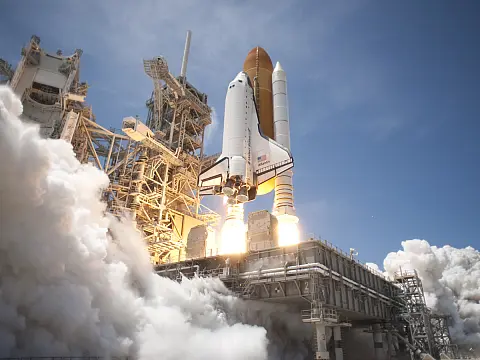Could Spinning Spacecraft Provide Artificial Gravity?Artificial gravity is the creation of an inertial force that mimics gravitational force and will be essential for space flight missions.
Gravity is what is known as a weak attracting force despite its effects on a solar system scale. Gravity is a force that occurs between all particles to an infinite distance. The exact cause of gravity is somewhat unknown, although we do understand the effects of gravity well. We're all familiar with the event in which an apple fell onto Issac Newton. Gravity keeps objects and people in place and is essential to human development and survival.
Astronauts live and work in zero gravity on the International Space Station and don't seem to miss gravity. However, prolonged exposure to weightlessness can cause some health problems. The heart has evolved to work with the gravity of Earth. The heart pumps blood strongly upward to combat the force of gravity so we can have adequate blood flow to the brain. With no gravity, the heart's upward force is too strong. This can create swelling in the eyes and face.
The immune system also suffers in zero gravity. Astronauts can sometimes experience a recurrence of childhood illnesses, such as chicken pox. Diseases that occur in zero gravity are also difficult to treat, as medicines don't necessarily work the way they do on Earth.
In the not-too-distant future, manned missions to Mars could be on the table. This journey is expected to last up to six months one way. During this time the astronauts will be in zero gravity. Not only would this extended period of weightlessness be annoying due to the constant floating around, but it could also be detrimental to their health. Could artificial gravity be a solution?
Spinning Spacecraft Could Provide Artificial Gravity
Spinning space stations are a staple of Sci-Fi, from Babylon 5 to Space Station 1 in the film 2001: A Space Odyssey. Inhabitants live in simulated artificial gravity, but it is not the same as that experienced on Earth. Can spinning spacecraft provide artificial gravity?
The cornerstone of Einstein's General Theory of Relativity is his observation that gravity and acceleration are indistinguishable. Put someone in a rocket that accelerates through space at 9.8m/s (35km/h) and their feet will be glued to the floor of their cabin just as if they were experiencing gravity on the surface of the Earth. Of course, accelerating at 9.8m/s in a straight line forever isn't a very practical way of simulating gravity. A better way is to exploit "centrifugal acceleration", an effect in which someone spinning, for instance, on a merry-go-round, appears to be flung outwards.
This is the phenomenon that Arthur C Clarke exploited in his film 2001: A Space Odyssey. In the film, Dr Heywood Floyd's shuttle docks at the axis of Space Station 1, a 275m (900ft) diameter, slowly rotating wheel. As he makes his way outward along one of the spoke-like corridors, his weight (which is a measure of the gravitational force acting on his body) gradually increases until finally, at the rim of the station, it is close to his weight on Earth.
Of course, it's not quite the same as gravity on Earth. If Floyd drops an object, it does not fall directly to the floor but appears to be deflected in the opposite direction to the space station's rotation. This is known as the "Coriolis effect". The Coriolis effect illustrates a subtle point that was recognised by Einstein: gravity is only truly indistinguishable from acceleration in very small volumes of space. This means that, although we can simulate something like the Earth's gravity, we can never really do it perfectly.










